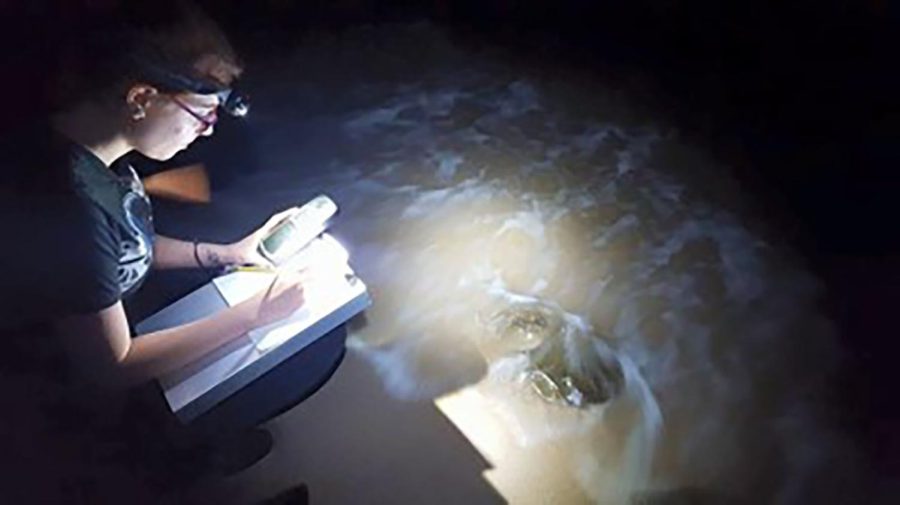Students collect data on local horseshoe crabs
Photo courtesy of Paul Bushmann
Former AACC biology student Amethyst Conwoy records data about a horseshoe crab at Cove Point in 2015.
January 24, 2023
Student volunteers are helping AACC’s Environmental Center collect data on local horseshoe crab populations.
A few students each semester assist biology professor Paul Bushmann in gathering information about the crabs they find on Chesapeake Bay beaches, like how many eggs they lay and where they build their nests.
“It has been fun to broaden my experiences,” dual-enrolled student Emily Ernst, who helped Bushmann collect data on the crabs last year, said. “Before this study, I had never done work in microbiology. I have learned so much about laboratory work.”
These horseshoe crabs, whose scientific name is Limulus polyphemus, are large crustaceans on the East Coast of North America. The crabs can grow as long as 19 inches, including a long, ridged tail that they use to flip themselves over when they get stuck upside down.
Bushmann, who has gathered data on the crabs for almost two decades, described the research as “notable” because no other researchers focus on the population around the Chesapeake Bay. He said the work is crucial to understanding and preserving the species.
“Ecologically, they’re an important part of the bay,” Bushmann said. “They’ve been around for a good bit longer than dinosaurs were ever around, and they’re still here. It would just be rotten to have them decline or disappear because of something we did after 100 or 75 million years of existence.”
The Environmental Center, located in the Health and Life Sciences building, conducts other research, including a project on bacteria levels in the creek on the Arnold campus and local rivers; a study on the types of life in temporary water pools; and the growing and planting of aquatic plants to aid conservation efforts.
Environmental Center Director Tammy Domanski, a biology professor, said the center’s goal is to give students the opportunity to get “hands-on” experience with research and spread awareness about the field of environmental science, adding students “need to be educated, aware and, in fact, even be advocates for environmental concerns.”
Bushmann said the center was “conceived of as this kind of collaborative effort for professors to engage students in research.”












